Black Mondo Grass
or... Ophiopogon planiscapus 'nigrescens', or... Black lilyturf
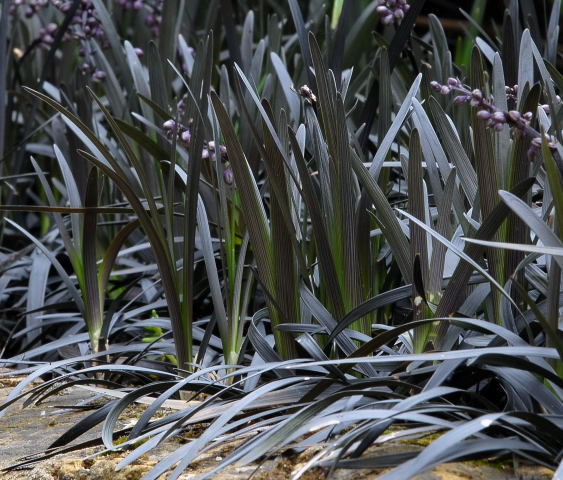
Ophiopogon planiscapus 'Nigrescens'
There are 101 different uses for the Black mondo grass:
- Edging patios.
- Edging paths.
- Under planting within containers.
- Low ground cover.
- Hmm....?
Anyway the point is, Ophiopogon planiscapus 'Nigrescens' is a versatile little plant with an extremely awkward name. This plant is actually a member of the lily family and not a grass. A particularly good feature of this plant is that it does not go through a messy phase. Most evergreens shed their old leaves annually causing a mess and looking temporarily scruffy. Not so with the Black mondo grass. It appears to retain its shiny, almost black leaves continuously. Any die back is almost imperceptible.
Ophiopogon planiscapus 'Nigrescens' is a tough plant, tolerating drought and other temporary hardships. It does not thrive on neglect however. To get the most out of this plant, a moist, well drained soil, in full or partial sun will see this plant slowly but surely make significant headway. It spreads mainly by means of underground runners but will also self seed.
The main draw back of this plant is its speed of growth. This unfortunately is reflected in the price. Luckily there is a cheap and easy method of propagation.
Growing Black mondo grass from seeds
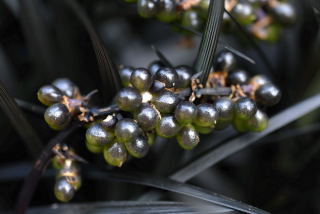
Un-ripe seeds
The first step is to harvest your Ophiopogon planiscapus 'Nigrescens' seeds. Make sure they are completely black (dark purple). Check this by turning the seed pods over. In this example the seeds still show some signs of green. Leave them on the plant a bit longer. In the garden featured on this website the seeds are usually ripe around the end of October/ early November
.
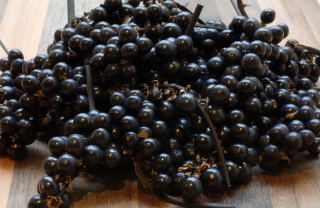
Harvest ready for processing
Allowing the seed pods to ripen fully makes them easier to peel. It also makes them more attractive to birds, so pay attention or you may find your plants stripped of seeds. If this happens you will just have to wait until next year. You may have friends who have this plant growing in their garden. Ask them if you can nick a few seeds. This is a useful source in the early years of growing this plant.
.
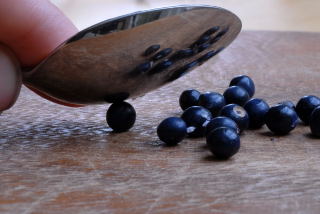
The teaspoon method of seed retrieval
Once harvested, your Black mondo grass seeds need to be peeled. One method is to simply squeeze the seeds between thumb and forefinger. After about 20 seeds, this method becomes quite painful. So for large numbers of seeds, a teaspoon is a useful tool.
.
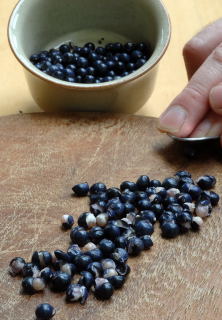
Industrial scale seed retrieval
Set up a production line.
.
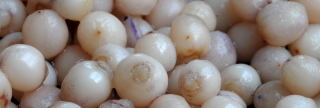
Washed and ready to go
Once squashed, the pulp can be removed and the seeds washed. They are then soaked for a couple of days, undergoing regular water changes, in the vain hope that this will speed up germination times.
.
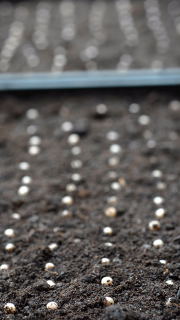
Seeds awaiting burial
The Ophiopogon planiscapus 'Nigrescens' seeds then need to be planted. Seed trays are ideal for large numbers. They can planted in modular cells but for large numbers you will need lots of space. The seeds also take an eternity to germinate and individual cells will be more likely to dry out.
Seeds should be planted about 2cms apart (just under an inch). There is no need to sterilise the soil or use fungicides. Just make sure you use nice fresh compost. Once the sees are planted, cover them with a layer of compost and water them.
The trays are best covered with a clear plastic lid to prevent the soil drying out. The seed trays are then placed out of the way under the greenhouse bench. A cool room indoors works just as well. If you have a cold frame, stick them in there. Outdoors is also fine but cover them with chicken wire to dissuade curious squirrels.
.
Wait for a very long time....
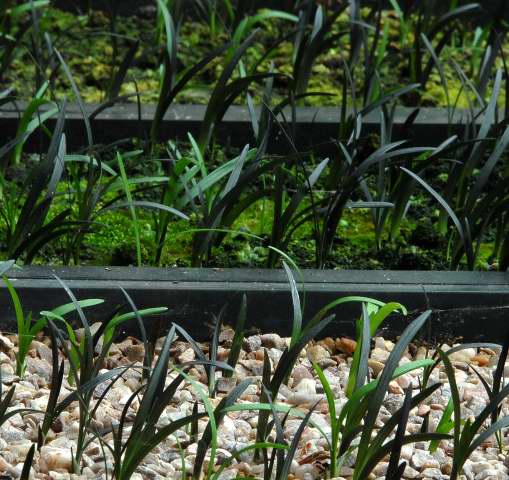
Newly germinated plants
In this instance the seeds were planted in late November and began appearing throughout May. Seed trays left outside in garden took a further month to germinate. Germination times indoors are reduced slightly but the risk of forgetting about them and then the seed trays drying out are higher.
You can expect germination rates close to 100% so long as the trays never dry out. What you will get is about 75% Black plants and 25% Green. Throw the green ones away.
The plants are best left in their trays until the following spring. Plant them out in rich soil about 5cms apart. Water well and your Black mondo grass will soon establish and begin to spread by means of runners.
Growing Ophiopogon planiscapus 'Nigrescens' is a long term project, but before you know it, you can have hundreds of plants to put in any number of places. The plants in the picture at the top of the page were 4 years old when the picture was taken.
.

